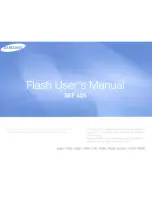
8
1
Testing the motion sensor
□
Turn the arrow on the MODE knob to “TEST”
for test mode.
□
Turn the arrow on the SENSITIVITY knob to a
middle point between “+” and “–”.
□
Turn on the power to the fixture. Allow fixture
to warm up approximately 90 seconds before
testing. (Lights may or may not come on
during warm-up period; this is normal.)
□
Aim sensor (B) toward the general direction
that motion will be coming from. Always
position the sensor head (B) with control
switches facing toward the ground.
□
Walk through the detection zone at the
farthest distance you want your detector
to detect motion.
□
Adjust the SENSITIVITY knob until you get
desired results. For more range, aim sensor
(B) slightly upward. For less range, aim sensor
head (B) slightly downward. Lights will turn
OFF 4 seconds after motion stops.
□
Sensor Head Placement: For optimum
detection, you may have to experiment
with aiming and settings. Each location
will be different and your terrain may
affect the angle your sensor needs.
Adjusting the angle will change your
area of detection.
note:
For maximum range performance, allow fixture
to operate in any mode (with power to the unit) for at
least 48 hours.
2
Setting the On time
□
Adjust the “Auto” MODE knob to a time
selection from 1min–12min, depending on
how many minutes you want the fixture to
stay on after motion is detected. At dusk,
the photo control will activate your fixture to
operate according to the settings chosen.
□
This fixture is equipped with a red indicator
light that stays on until motion is detected.
Light will momentarily flash off and on when
motion is detected.
note:
Decreasing the SENSITIVITY will decrease the
distance the unit can detect.
note:
During daylight hours, the red LED indicator light
will flash when motion is detected. This is normal.
operation
Bottom of sensor
B








































